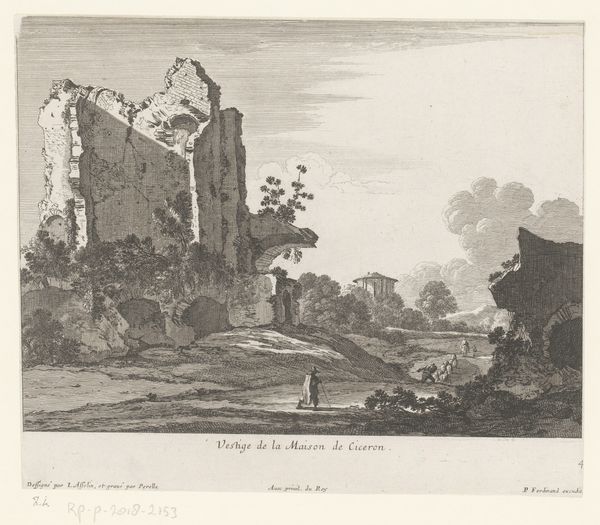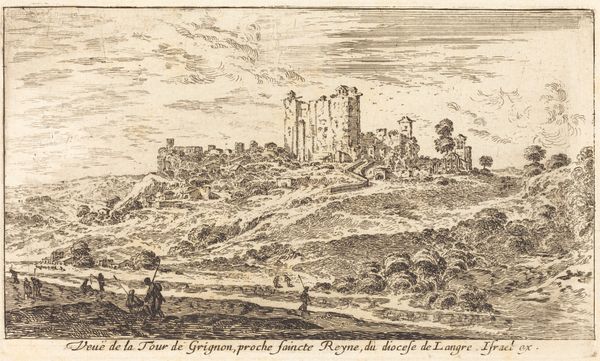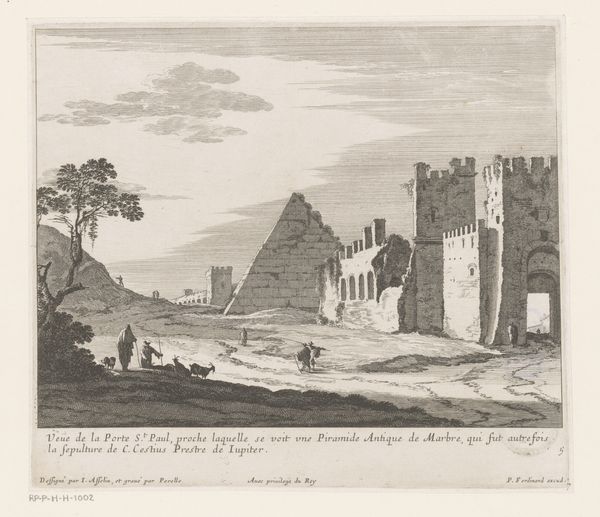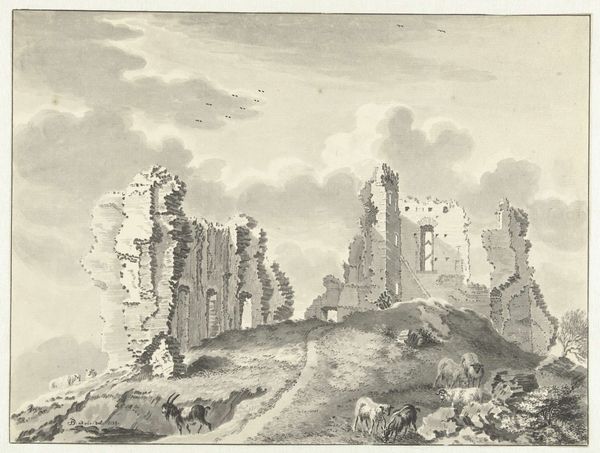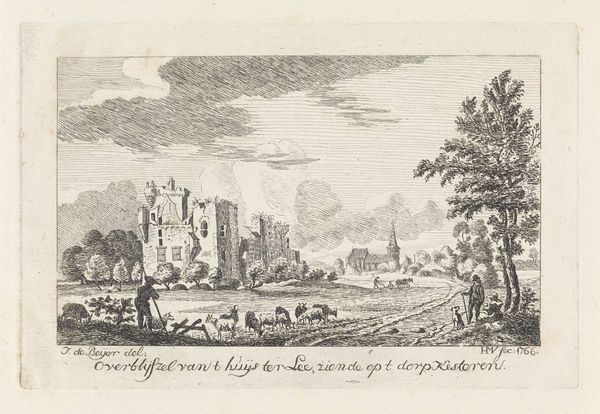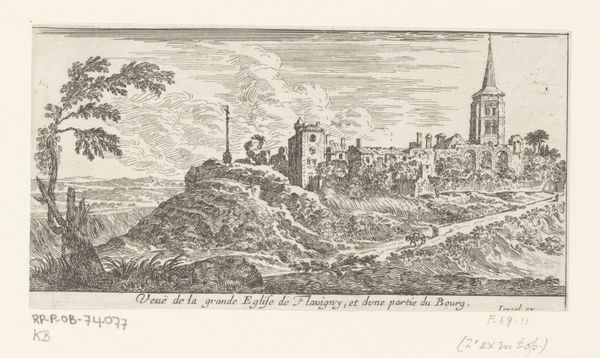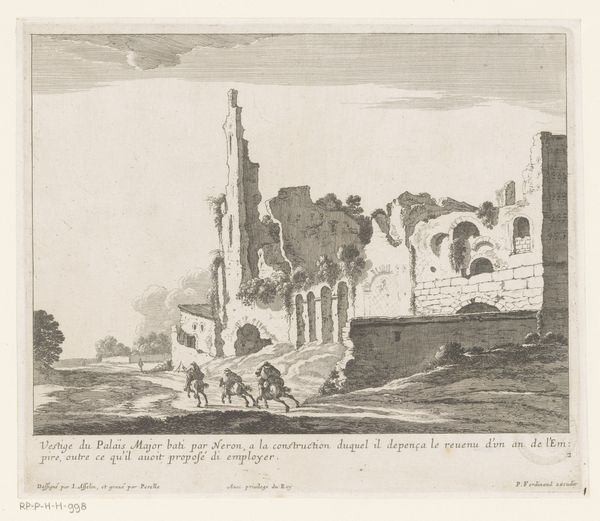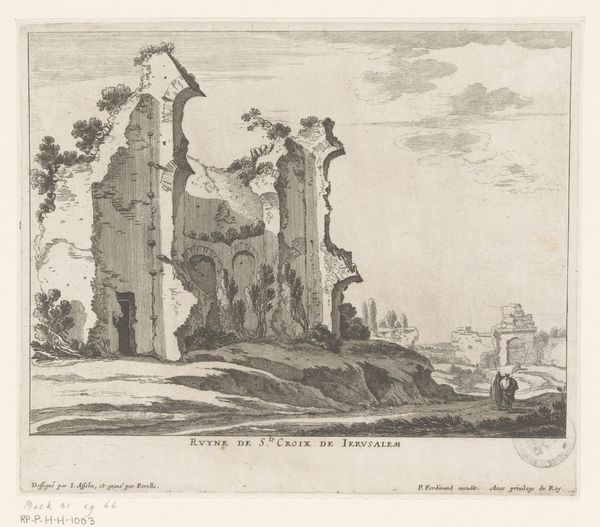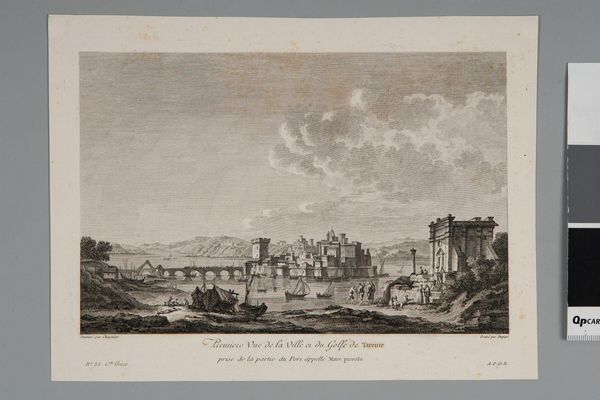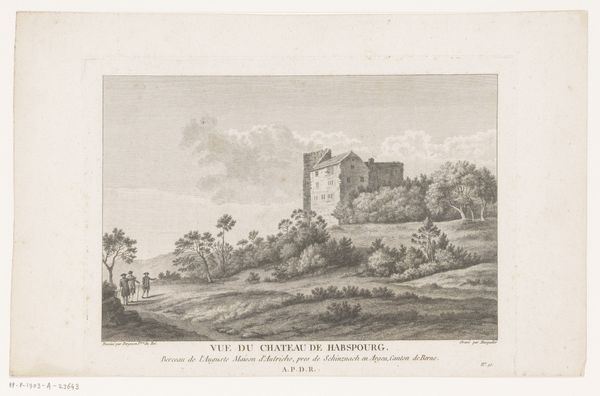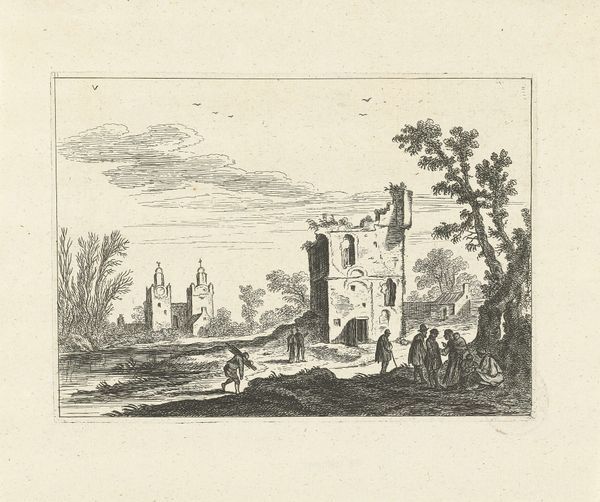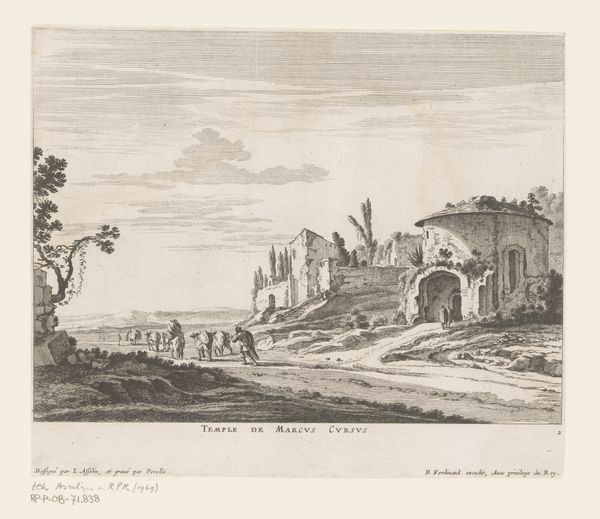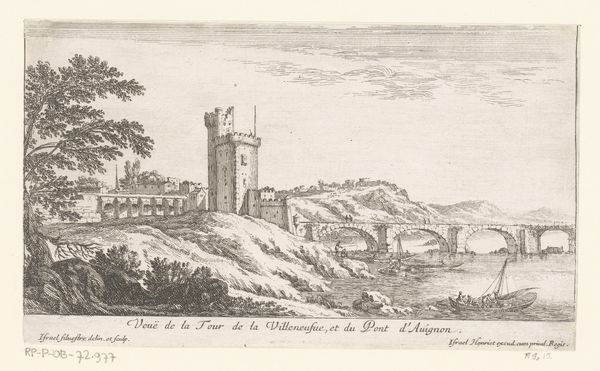
print, engraving, architecture
#
baroque
# print
#
old engraving style
#
landscape
#
ancient-mediterranean
#
history-painting
#
engraving
#
architecture
Dimensions: height 217 mm, width 252 mm
Copyright: Rijks Museum: Open Domain
Editor: Here we have Nicolas Perelle’s etching, "Gezicht op de ruïnes van de Vredestempel, te Rome," made sometime between 1641 and 1655. It’s quite striking, how the ruins dominate the landscape, evoking a feeling of both grandeur and melancholy. What's your take on this piece? Curator: It's fascinating to consider this work within its historical context. The ruins themselves, the Temple of Peace, were a testament to imperial power, built after the Roman-Jewish wars. But Perelle captures them in decay, overgrown. Editor: Yes, I see that now. Curator: What does it signify to you that a 17th-century artist is depicting ancient ruins? What dialogues might Perelle be creating about the passage of time, the fragility of power, and even the shifting attitudes towards the concept of empire? Editor: So it’s less about an objective representation and more about a commentary on the cyclical nature of civilizations? Curator: Precisely. And even further, we must acknowledge that representations of ruins often reflect contemporary anxieties and power dynamics. What anxieties might be relevant to the artist’s time? And who has the power to even create such images? Editor: Well, Europe was in turmoil, full of wars and religious conflicts. Perhaps he's suggesting that no empire is eternal. Thinking about power, it took considerable power to commission an artwork like this at the time... so it wasn't exactly a subversive act. Curator: Excellent point. It makes one consider the complex relationships between artists, patrons, and the ever-shifting sands of historical narratives. Editor: This makes me rethink how I initially saw the print. Now I see it as a powerful, albeit subtle, statement about history, power, and perspective. Curator: Indeed. It's in these layers of interpretation that art truly comes alive and engages us.
Comments
No comments
Be the first to comment and join the conversation on the ultimate creative platform.
